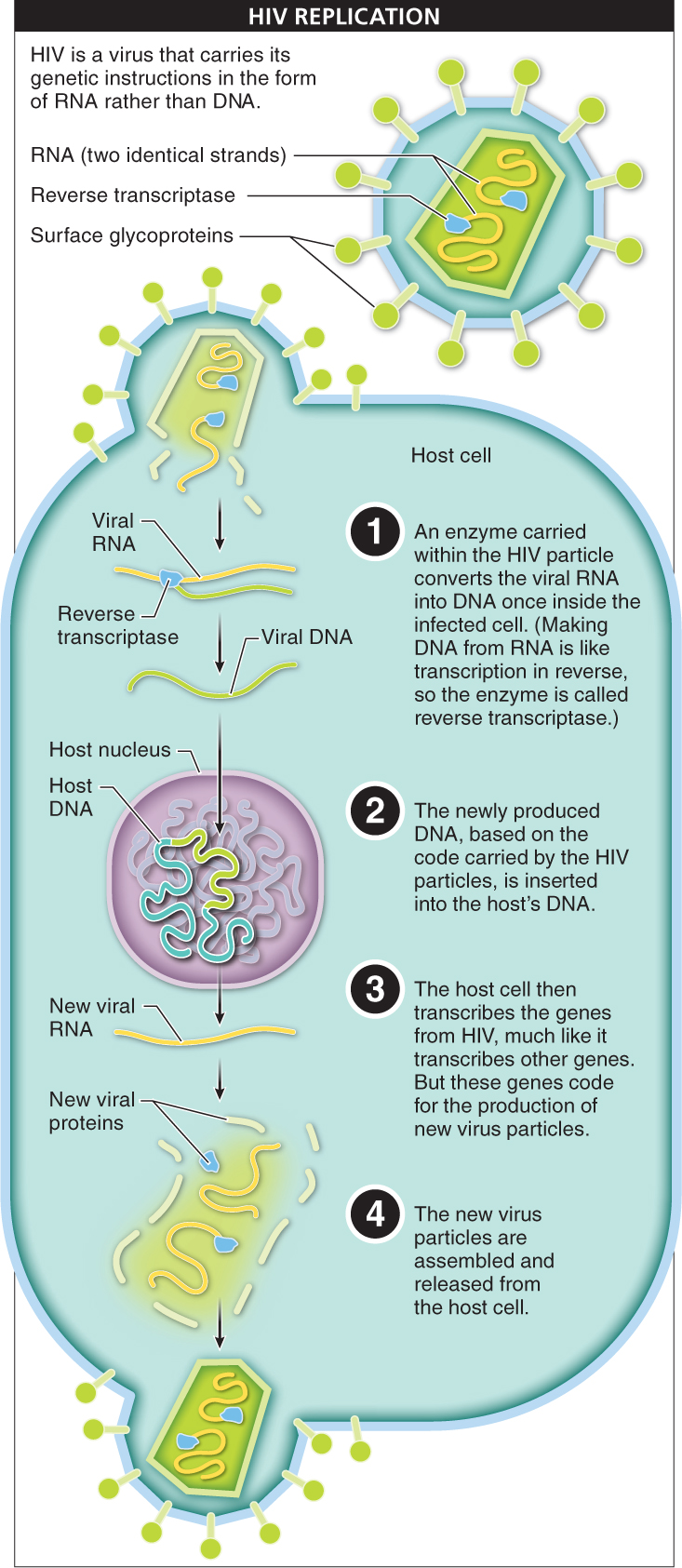
New infectious diseases—
562
HIV mutates easily. HIV is a retrovirus, an RNA-
This enormous genetic variation in the HIV particles circulating in an infected person’s body makes the infection hard to treat. Virus particles with different mutations can have different proteins on their surfaces, and these surface proteins change each time the virus replicates inside a host cell. Each new generation of HIV in the infected individual contains viruses with surface proteins that his or her immune system has never seen. Furthermore, some of the HIV mutations will confer resistance to the drugs that are being used to treat the patient, and new drugs must be used.
HIV attacks white blood cells. All of those problems would apply to any disease caused by a retrovirus, but HIV offers an additional challenge: it targets cells in the host’s immune system, especially white blood cells, and particularly those that search for and attack invading bacteria or viruses. During the incubation period, which can last for many years, HIV infects white blood cells. New ones are produced to replace those killed by the virus, however, and the infected person has virtually no symptoms. Nonetheless, HIV is present in the individual’s body fluids during the incubation period and can be transmitted to other individuals. HIV testing is used to detect infections during this stage.
Each time HIV infects another white blood cell, the reverse transcriptase makes errors in transcribing the RNA to DNA, and eventually one of the mutations allows the virus to bind to the glycoprotein on the surface of a specialized type of white blood cell—

563
The immune system collapses. Normally, white blood cells all work together to identify and destroy cells that have been infected by a virus. When HIV begins to kill the cells that hunt for viruses and bacteria, the immune system begins to fail—
TAKE-HOME MESSAGE 13.19
HIV is especially difficult to control. Mutations change the properties of the retrovirus so that it is hard for the immune system to recognize it, and they produce variants that are resistant to the drugs used to treat the HIV infection.
Why is it so difficult to find a vaccine or cure for HIV?
HIV is a retrovirus. In other words, it is a RNA-containing virus that also contains a reverse transcriptase, which uses the viral RNA to make DNA. This DNA is incorporated into the host cell’s DNA and helps replicate the virus. Retroviruses are very prone to mutations. So the HIV virus in each patient’s body is different. Additionally, HIV attacks white blood cells, targeting the cells in the body that search for and attack invading viruses.
564